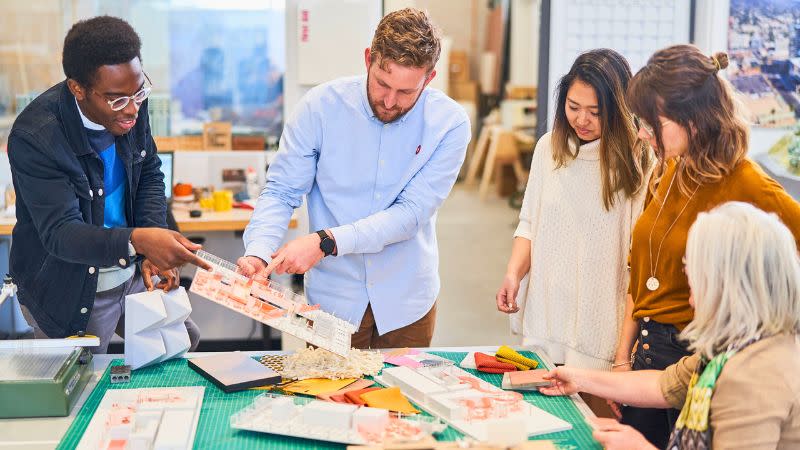
Thinking pink is the new black in 21st century urban design.
And the eye-popping furniture in a Los Angeles park that transcended its intended purpose when used by protesters as makeshift barricades during demonstrations against immigration raids has become its poster child.
In that flashpoint moment, the hot pink chairs, benches and tables of Gloria Molina Grand Park not only emerged as a symbol of the spirit of Angelenos but the power of innovative public space planning, unshackled from tradition.
“Seeing our work repurposed in a moment of collective action was humbling and powerful,” Andy Lantz, co-chief executive and creative director of LA-based architecture and urban design firm Rios, posted on social media at the time.
Of course, it was a scenario never contemplated during the design process.
“Never do I want to do a diagram or a design that talks about defensibility in a public space during a protest,” Lantz tells The Urban Developer. “Never do I want to make that the foreground of how we design … because it changes the perspective of what it is.”
But the use of the pink furniture by protesters to shield themselves during last month’s protests did tap into a fundamental aspect of the firm’s design philosophy behind the 5ha green space project in downtown LA.
Freedom—or more specifically, freedom of movement.
The mobility of the brightly coloured pieces of modular furniture was the key to the design’s success.
“Convincing a city to not permanently fix down furniture was an amazing milestone,” Lantz says. “Because when it’s loose, it allows people to engage and participate with their public realm in such a way that they find better community in it.

“There’s a level of respect that comes when you show design as freedom to people and then have people involved with that approach.
“A lot of what makes Grand Park successful is the design … the fact furniture is pink is intentional for the idea it welcomes a friendly exchange, and the approach taken that didn't permanently affix the furniture but allowed people to use, move and reconfigure it as they saw fit.
“So the fact that something so joyful became a symbol of both hope and protection when needed … I think it’s really remarkable.”
Lantz will be jetting into the Gold Coast to speak at The Urban Developer flagship Urbanity-25 conference on July 29-31.
His presentation will include case studies of projects that Rios is working on around the world, including a major build-to-rent project in Sydney, that challenge traditional urban design principles to transform public spaces from static environments into dynamic, responsive platforms that connect people and can adapt to diverse community interactions.
“When you follow tradition when imagining urban places, spaces and environments it usually is led with market forces and economics,” Lantz says.
“But when you take a minute and start to reframe that outside the bubble of a pro forma or the tradition of ‘we build things to make money’ you start to see new influences come together.
“And I think that’s kind of our specialty … helping developers to look beyond all that and really put energy into places.”
Lantz will join The Urban Developer’s flagship three-day conference, Urbanity, at the Gold Coast on July 29-31. For more details click here.